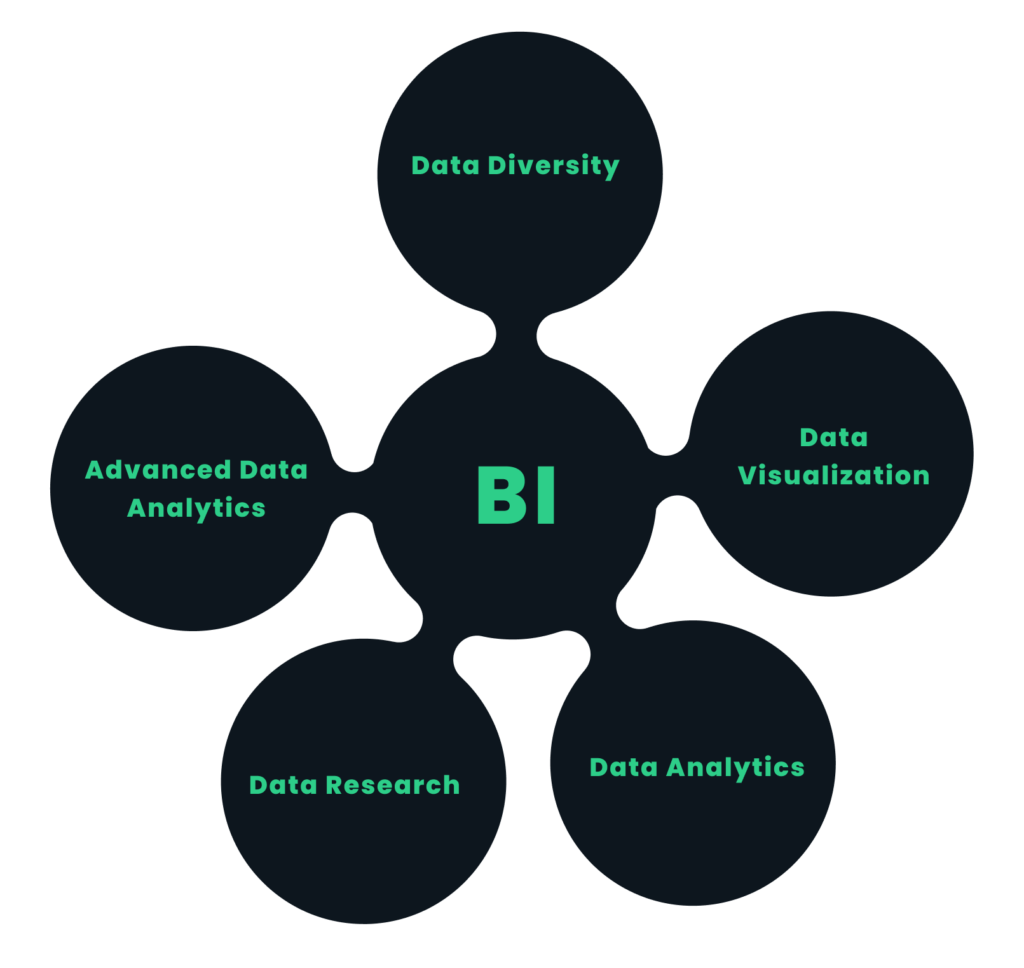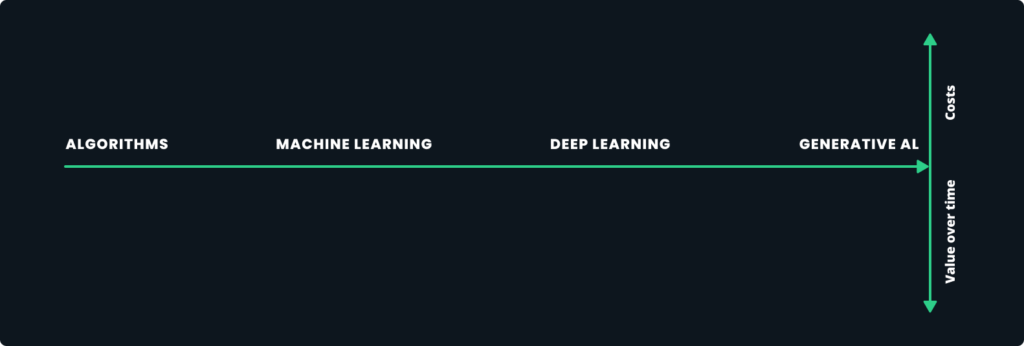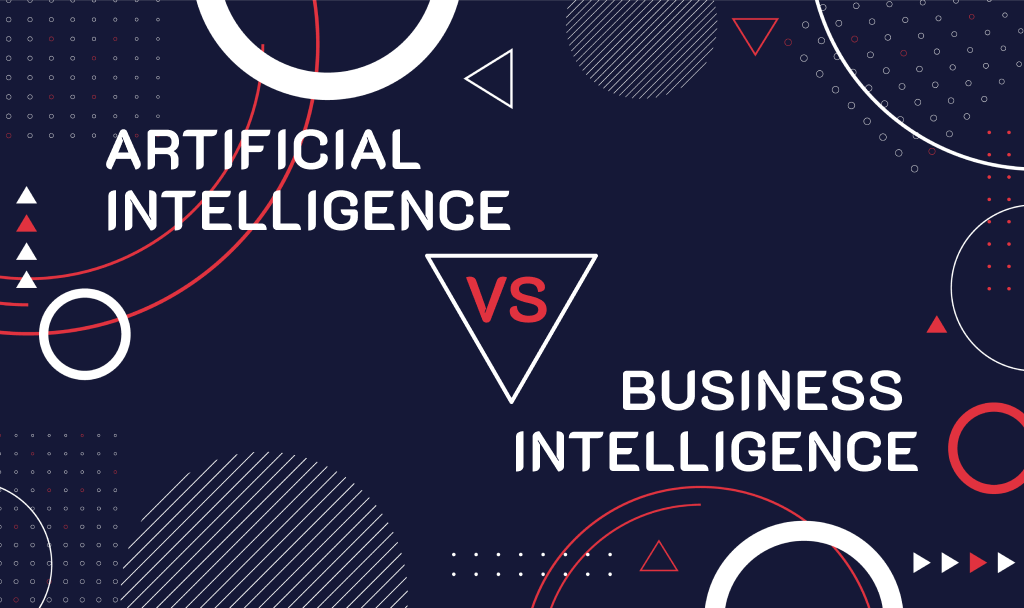You’re sitting on a mountain of data, but despite all the numbers and reports, you’re still wondering—how can this information actually drive growth? Should you focus on understanding past performance through Business Intelligence (BI) or leap ahead with Artificial Intelligence (AI) to predict and even automate future outcomes?
In a world where data is everything, choosing between BI and AI could be one of the smartest decisions your organization makes. BI tools and AI solutions offer distinct advantages, yet they often serve different purposes. This blog explores the evolution of AI and BI, the reasons for prioritizing data analytics, and the considerations for deciding which—if not both—is the smarter investment.
1. The Evolution of AI and BI
AI’s story began humbly, rooted in basic machine learning algorithms that could classify data and make basic predictions. Over time, AI evolved significantly, from early expert systems to today’s complex, deep learning models that power everything from self-driving cars to voice assistants. AI’s exponential growth has given businesses exceptional ways to engage with data, driving transformative results in predictive analytics, automation, and decision-making.

Business Intelligence (BI), meanwhile, originated as a method to convert raw data into understandable insights. Originally, BI tools provided basic data visualization, reporting, and historical analysis capabilities. As data analytics technology improved, BI evolved to offer more dynamic, real-time insights, shaping how businesses interpreted trends and identified new opportunities.
2. Why is Data Analytics Crucial for Modern Decision-Making?
Data analytics enables organizations to extract actionable insights from vast and complex datasets. By leveraging advanced algorithms and predictive models, businesses can not only optimize operations but also foresee market trends, mitigate risks, and personalize customer experiences with precision. Businesses can no longer rely on intuition alone—decisions must be data-driven to be effective.

BI’s Role in Data Analytics
BI tools, such as Microsoft Power BI and Yellowfin BI, are pivotal in helping businesses interpret historical data and make sense of patterns that emerge. These tools allow users to visualize data through dashboards, streamline reporting, and identify trends in real time. This capability to drill down into data provides clarity on what has worked, what hasn’t, and what the future may look like based on historical trends.
3. AI: The Differentiated Approach to Understanding Data
AI brings something new to the table, going beyond descriptive analytics by predicting future outcomes and even suggesting optimal actions. Unlike BI, which focuses on retrospective analysis, AI enables businesses to get ahead by offering insights that are forward-looking. Through predictive and prescriptive analytics, AI can identify potential outcomes and guide decision-makers on optimal strategies.
Understanding AI Spectrum
Core algorithms to train use case models with ML and DL to Generative AI

Some Examples include,
ChatGPT & CoPilot by Microsoft (powered by OpenAI) for Chatbot & Content Creation (GenAI) and LLaMa3 by Meta (GenAI)
AI algorithms excel at identifying complex patterns across vast datasets. Where BI provides a snapshot of the past and present, AI forecasts trends and suggests actions, often automating these insights in real-time applications. This ability to generate forward-looking insights enables organizations to act proactively, giving them a superiority in fast-changing markets.
AI projects, however, are not without their challenges. Many enterprises report mixed results in terms of ROI and time to value:
- ROI: Gartner indicates that less than 50% of AI projects reach full deployment, and only 53% of AI projects deliver value within the first year of implementation. However, for those that succeed, AI projects can yield a 20-30% increase in operational efficiency.
- Time to Value: AI projects can take longer to implement, often taking 6-12 months to deliver results, compared to BI implementations that average around 3-6 months.
In industries like financial services, AI adoption has become particularly valuable. A PwC survey revealed that 90% of financial executives are investing in AI to gain a competitive edge, using it for tasks such as fraud detection, risk assessment, and customer personalization.
4. Do You Need BI or AI?
Deciding between BI and AI depends on an organization’s unique needs, goals, and resources. Both technologies have strengths, and they can often complement each other. Here are some considerations to guide your decision.
When to Use BI
BI’s quicker time to value and lower deployment costs often make it a top choice for companies needing immediate insights into historical data. BI implementation tends to be cost-effective: the Forrester report highlights that BI solutions typically have an ROI within six months, providing an average of $13 in return for every $1 spent on BI technology.
When AI Makes Sense
For AI, the path to ROI can be longer but often substantial. AI projects tend to be resource-intensive and involve higher upfront costs, but Deloitte reports that companies deploying AI for more than three years see up to a 25% improvement in customer satisfaction and 20% in revenue growth. However, nearly 60% of executives report challenges in measuring AI’s direct impact on ROI, often due to complex integration processes and skill gaps.
Key Considerations
- ROI: BI tools generally have lower initial costs and yield immediate results, whereas AI implementations can take longer but often provide long-term value through advanced automation and optimization.
- Success Rates: BI success depends largely on data visualization and reporting, while AI success relies on the quality of data and the complexity of the models.
- Time to Value: BI tools usually offer faster implementation times, while AI systems may require longer setup, training, and testing periods.

5. Blending AI and BI: The Best of Both Worlds
For organizations seeking the benefits of both technologies, many modern BI solutions now include AI-augmented features. These integrated solutions combine BI’s simplicity with AI’s intelligence, providing the best of both worlds. For instance:
- Power BI includes AI-driven data insights, helping users identify patterns and correlations without needing advanced data science skills.
- Yellowfin BI has incorporated smart insights and automated analyses, allowing users to quickly uncover trends and generate predictive analytics.
These AI-powered features in BI platforms enable businesses to explore data dynamically while retaining the intuitive, user-friendly interfaces that BI is known for.
Conclusion
In conclusion, both BI and AI offer immense value, and the right choice depends on your organization’s goals. For organizations seeking comprehensive insights, integrating AI within a BI framework can provide a balanced approach that leverages both historical and predictive analytics.
Celestial Systems provides tailored AI and BI solutions to equip your business with powerful data insights and predictive capabilities. Contact us to see how our expertise can drive strategic, data-driven growth for your organization.

